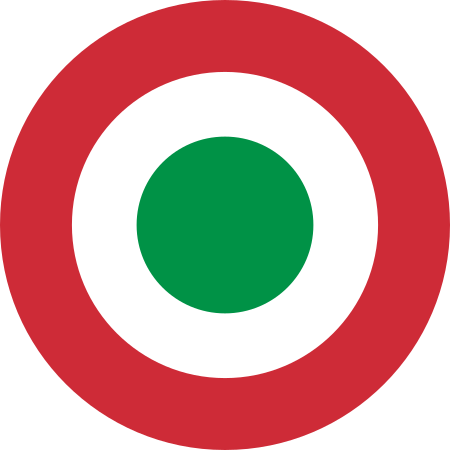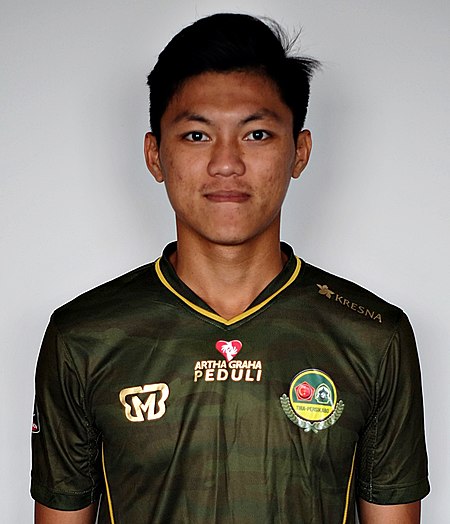Lavabo
|
Read other articles:

Men's volleyballat the Games of the XXIX OlympiadVenueCapital Indoor Stadium andBeijing Institute of Technology GymnasiumDate10–24 AugustCompetitors144 from 12 nationsMedalists United States (3rd title) Brazil Russia← 20042012 → Volleyball at the2008 Summer OlympicsIndoorTournamentmenwomenRostersmenwomenBeachTournamentmenwomenRostersmenwomenvte Competing teams The men's tournament in volleyball at the 2008 Summer Olympics was the 12th edition o…

For the village in Salta Province, see San Juan, Salta. This article needs additional citations for verification. Please help improve this article by adding citations to reliable sources. Unsourced material may be challenged and removed.Find sources: San Juan, Argentina – news · newspapers · books · scholar · JSTOR (July 2013) (Learn how and when to remove this message) City in San Juan, ArgentinaSan JuanCityCollage of San Juan Coat of armsNickname: …

Man assigned female at birth Kye Allums, the first openly transgender NCAA Division I college athlete. Part of a series onTransgender topics OutlineHistoryTimeline Gender identities Androgyne Bissu, Calabai, Calalai Burrnesha Cisgender Gender bender Hijra Non-binary or genderqueer Gender fluidity Kathoey Koekchuch Third gender Bakla Faʻafafine Femminiello Khanith Māhū Mudoko dako Mukhannath Muxe Travesti Two-spirit Winkte X-gender Trans man Trans woman Fakaleitī…

Voce principale: Genoa Cricket and Football Club. Genoa 1893Stagione 1967-1968Sport calcio Squadra Genoa Allenatore Livio Fongaro (sino all'11 dicembre 1967) Aldo Campatelli (dall'11 dicembre 1967) Presidente Renzo Fossati[1] Serie B17º posto Coppa ItaliaPrimo turno Maggiori presenzeCampionato: Derlin e Caocci (39) Miglior marcatoreCampionato: Enzo Ferrari (13) StadioStadio Luigi Ferraris Abbonati1 798 1966-1967 1968-1969 Si invita a seguire il modello di voce Questa voce racc…

Запрос «Пугачёва» перенаправляется сюда; см. также другие значения. Алла Пугачёва На фестивале «Славянский базар в Витебске», 2016 год Основная информация Полное имя Алла Борисовна Пугачёва Дата рождения 15 апреля 1949(1949-04-15) (75 лет) Место рождения Москва, СССР[1] �…

1966 Iowa gubernatorial election ← 1964 November 8, 1966 1968 → Nominee Harold Hughes William G. Murray Party Democratic Republican Popular vote 494,259 394,518 Percentage 55.34% 44.17% County resultsHughes: 50–60% 60–70% 70–80% Murray: 40–50% 50–60% 60–70% Governor before …

Голубянки Самец голубянки икар Научная классификация Домен:ЭукариотыЦарство:ЖивотныеПодцарство:ЭуметазоиБез ранга:Двусторонне-симметричныеБез ранга:ПервичноротыеБез ранга:ЛиняющиеБез ранга:PanarthropodaТип:ЧленистоногиеПодтип:ТрахейнодышащиеНадкласс:ШестиногиеКласс:Н�…

«Cor Magis Tibi Wikipedia Pandit» (ringraziamento apposto nella pagina di Ines, l'iscrizione originale si trova a Siena, Porta Camollia.) (1° archivio talk - 2° archivio - 3° archivio - 4° archivio - 5° archivio - 6° archivio - 7° archivio - 8° archivio - 9° archivio - 10° archivio 11° archivio - 12° archivio - 13° archivio - 14° archivio - 15°archivio - 16° archivio - 17° archivio - 18° archivio - 19° archivio - 20° archivio 21° archivio - 22° archivio) Il signore che fa…

Serbian volleyball player Uroš KovačevićPersonal informationNationalitySerbianBorn (1993-05-06) 6 May 1993 (age 31)Kraljevo, Serbia, FR YugoslaviaHeight1.98 m (6 ft 6 in)Weight94 kg (207 lb)Spike355 cm (140 in)Block338 cm (133 in)Volleyball informationPositionOutside hitterCurrent clubUral UfaCareer YearsTeams 2003–2010 2010–2012 2012–2015 2015–2017 2016 2017–2020 2020–2021 2021–2023 2023–2024Ribnica Kraljevo ACH Volley Modena …

International athletics championship eventSenior women's race at the 1987 IAAF World Cross Country ChampionshipsOrganisersIAAFEdition15thDateMarch 22Host cityWarszawa, Poland VenueSłużewiec RacecourseEvents1Distances5.05 km – Senior womenParticipation152 athletes from 34 nations← 1986 Colombier 1988 Auckland → The Senior women's race at the 1987 IAAF World Cross Country Championships was held in Warszawa, Poland, at the Służewiec Racecourse on March 22, 1987. A report on the ev…

Artikel ini sebatang kara, artinya tidak ada artikel lain yang memiliki pranala balik ke halaman ini.Bantulah menambah pranala ke artikel ini dari artikel yang berhubungan atau coba peralatan pencari pranala.Tag ini diberikan pada Desember 2022. Maria Elvira Salazar Maria Elvira Salazar (lahir 1 November 1961) adalah seorang politikus Partai Republik yang menjabat sebagai anggota DPR. Sebelum masuk politik, ia bekerja untuk jaringan berbahasa Spanyol Telemundo selama tiga dasawarsa setelah bertu…

Trinidad and Tobago election Next Trinidad and Tobago general election ← 2020 By 2025 All 41 seats in the House of Representatives21 seats needed for a majority Leader Keith Rowley Kamla Persad-Bissessar Party PNM UNC Last election 49.05%, 22 seats 47.14%, 19 seats Current seats 22 19 Seats needed 2 Incumbent Prime Minister Keith Rowley PNM General elections will be held in Trinidad and Tobago by 2025 to elect 41 members to the 13th Trinidad and Tobago Republican…

Polish philosopher and historian of ideas (born 1927–2009) Leszek KołakowskiKołakowski in 1971Born(1927-10-23)23 October 1927Radom, PolandDied17 July 2009(2009-07-17) (aged 81)Oxford, EnglandEducationUniversity of ŁódźUniversity of Warsaw (PhD, 1953)Notable workMain Currents of Marxism (1976)AwardsPeace Prize of the German Book Trade (1977)MacArthur Fellowship (1983)Erasmus Prize (1983)Kluge Prize (2003)Jerusalem Prize (2007)Era20th-/21st-century philosophyRegionWestern philosophy Po…

British politician The Right HonourableThe Lord SoleyPCOfficial portrait, 2019Chair of the Parliamentary Labour PartyIn office3 May 1997 – 11 July 2001LeaderTony BlairPreceded byDoug HoyleSucceeded byJean CorstonMember of the House of LordsLord TemporalIn office29 June 2005 – 19 January 2023Life PeerageMember of Parliament for Ealing, Acton and Shepherd's BushHammersmith (1983–1997)Hammersmith North (1979–1983)In office3 May 1979 – 11 April 2005Preceded byFra…
Jogos eletrônicos Plataformas Arcade Console de jogos eletrônicos Jogo de console Jogo para celular Jogo on-line Jogo de computador Tópicos Desenvolvimento de jogos Jornalismo de jogos História dos jogos Indústria dos jogos Música dos jogos Gêneros Jogo eletrônico de ação Jogo eletrônico de tiro Survival horror Jogo eletrônico de ação e aventura Jogo eletrônico de aventura RPG eletrônico Jogo eletrônico de simulação Jogo eletrônico de esporte Jogo eletrônico de estratégia R…

ThirstPoster film ThirstNama lainHangul박쥐 Alih Aksara yang DisempurnakanBakjwiMcCune–ReischauerPakchwi SutradaraPark Chan-wookProduserPark Chan-wookAhn Soo-hyunSkenarioPark Chan-wookJeong Seo-kyeongBerdasarkanThérèse Raquinoleh Émile ZolaPemeranSong Kang-hoKim Ok-vinKim Hae-sookShin Ha-kyunPark In-hwanPenata musikJo Yeong-wookSinematograferChung Chung-hoonPenyuntingKim Sang-bumKim Jae-bumPerusahaanproduksiMoho FilmDistributorCJ Entertainment(Korea Selatan)Tanggal rilis 30 Ap…

Kingdom of viruses Orthornavirae Clockwise from top left: TEM of avian coronavirus, polio virus, bacteriophage Qβ, ebolavirus, tobacco mosaic virus, influenzavirus A, rotavirus, vesicular stomatitis virus. Center: phylogenetic tree of shared replication protein RdRp. Virus classification (unranked): Virus Realm: Riboviria Kingdom: Orthornavirae Phyla and classes Positive-strand RNA viruses Lenarviricota Kitrinoviricota Pisuviricota Pisoniviricetes Stelpaviricetes Negative-strand RNA viruses Amb…

This article does not cite any sources. Please help improve this article by adding citations to reliable sources. Unsourced material may be challenged and removed.Find sources: 5th Special Operations Regiment Slovakia – news · newspapers · books · scholar · JSTOR (December 2009) (Learn how and when to remove this message) A member of the 5th Special Forces Regiment conducts security inside HMMWV. The 5. Pluk špeciálneho určenia, 5. PŠU (literally…

Indonesian footballer Feby Eka Putra Feby Eka with TIRA-Persikabo in 2019Personal informationFull name Feby Eka PutraDate of birth (1999-02-12) 12 February 1999 (age 25)Place of birth Sidoarjo, IndonesiaHeight 1.83 m (6 ft 0 in)Position(s) Left wingerTeam informationCurrent team Dewa UnitedNumber 7Youth career2011–2016 SSB Gen B Mojokerto2017 Asprov Jawa TimurSenior career*Years Team Apps (Gls)2018-2019 Bali United 1 (0)2019 → TIRA-Persikabo (loan) 0 (0)2019 Persija Jakar…

Fictional entity in Game of Thrones Fictional character White WalkerA Song of Ice and Fire characterA White Walker with an ice spear, fromGame of ThronesFirst appearanceNovel: A Game of Thrones (1996) Television: Winter Is Coming (2011)Last appearanceTelevision: The Long Night (2019)Created byGeorge R. R. MartinPortrayed byVarious actorsIn-universe informationAliasesThe Others The DeadTypeNon-human creature White Walkers are humanoid creatures from the HBO television series Game of Thrones, and …






